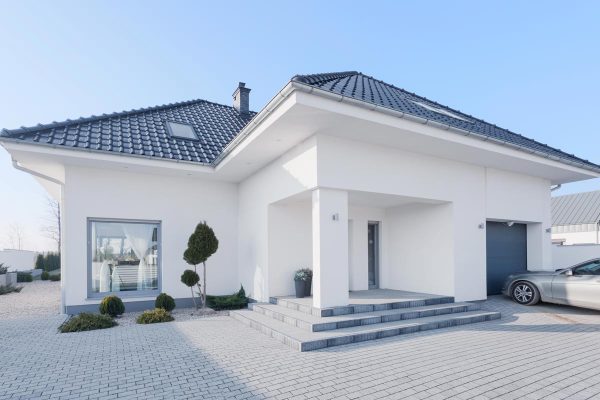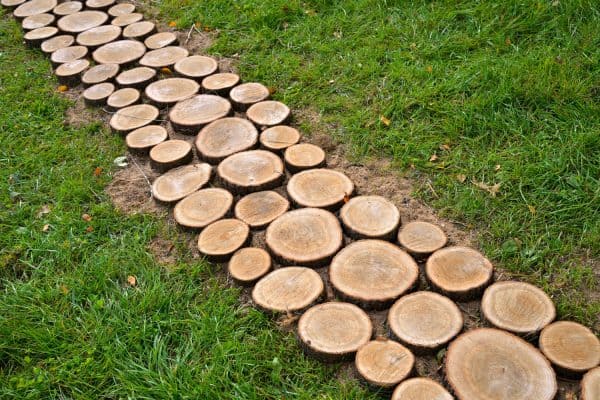Disclosure: We may get commissions for purchases made through links in this post.
If you want to give your space a distinctive look, colored stamped concrete is the go-to option. Aside from the compelling colors, different styles are available to make your concrete floor aesthetically pleasing. But how do you choose the correct stamped concrete color? We consulted masonry experts, and here's what we gathered.
You have the option of choosing a light or dark color for your stamped concrete. Furthermore, you can choose:
- integral,
- shake on color,
- release color,
- surface applied color,
- or white-on-white.
The colors you choose for your stamped concrete significantly impact how it looks and feels. Before picking a color, you should know your preference or taste. You also need to consider the foot traffic, weather, and cost.
Stamped concrete is available in a wide range of colors and patterns. However, finding the right color might be difficult, especially with so many options available. Keep on reading as we will cover the best stamped concrete colors available and guide you to make the best choice.
![Stamp concrete pattern floor that reflect sunlight, How to Choose Stamped Concrete Color [With 5 Color Options!]](https://pavingplatform.com/wp-content/uploads/2022/03/How-to-Choose-Stamped-Concrete-Color.-800x1200.png)
How Do You Pick a Stamped Concrete Color?
Stamped concrete is a popular paving alternative that is cost-effective and aesthetically pleasing. When it comes to its colors, you have the freedom to choose any color, ranging from brown to gray.
There are various options for stamped concrete colors, but dark color combinations are preferred. A brown or dark release/accent color is also recommended for tan stamp concrete. If the integral color is brown or gray, the release color should be black or dark gray to contrast with the brown or gray.
Light Colors
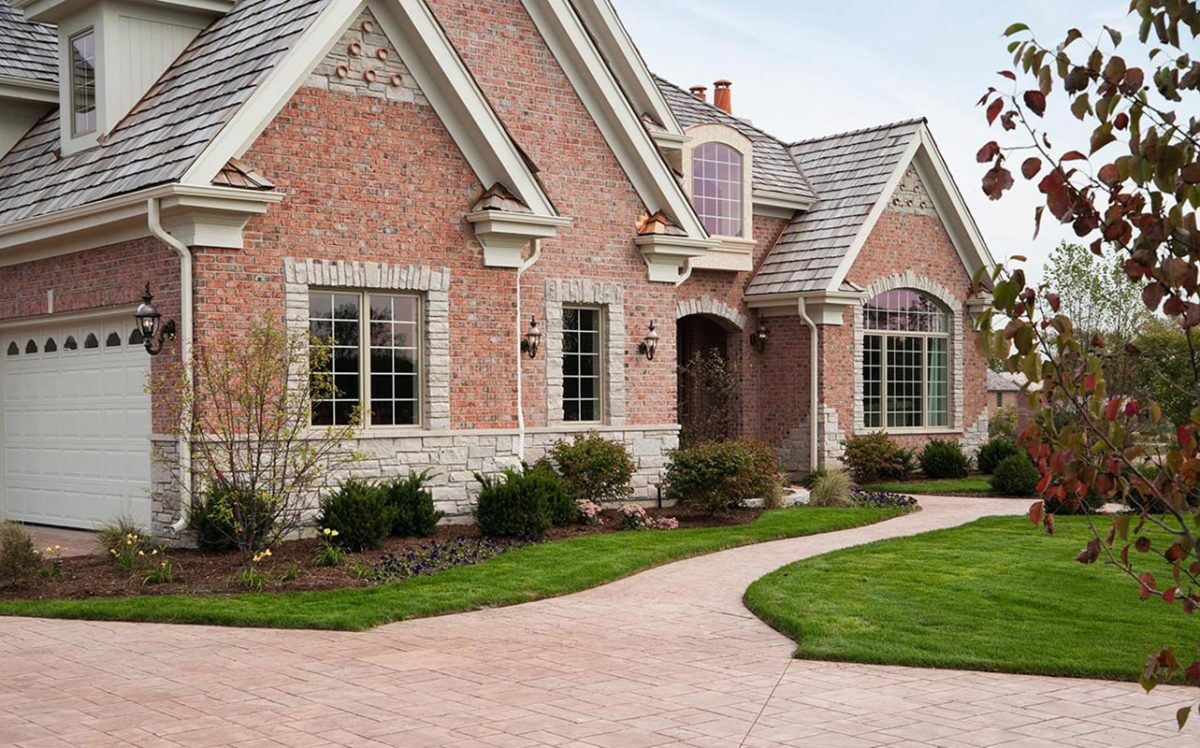
Stamped concrete is available in various light color options: Beige, Pecos sand, sandstone hue, light gray, gold sandstone, antique white, buff, camel, silver-gray, and sun gray. Black and white are the most popular dark hues for stamped concrete. All colors can be used for release applications, but use a darker color for a more prominent appearance.
Dark Colors
Choosing a dark color for both the base and the release requires expertise, as both dark hues can overpower one another if not chosen with care. For example, you can combine Pecos sand base color with a walnut release agent to see how it works together. Also, check out this article on painting concrete pavers to learn more.
Color Options for Your Stamped Concrete
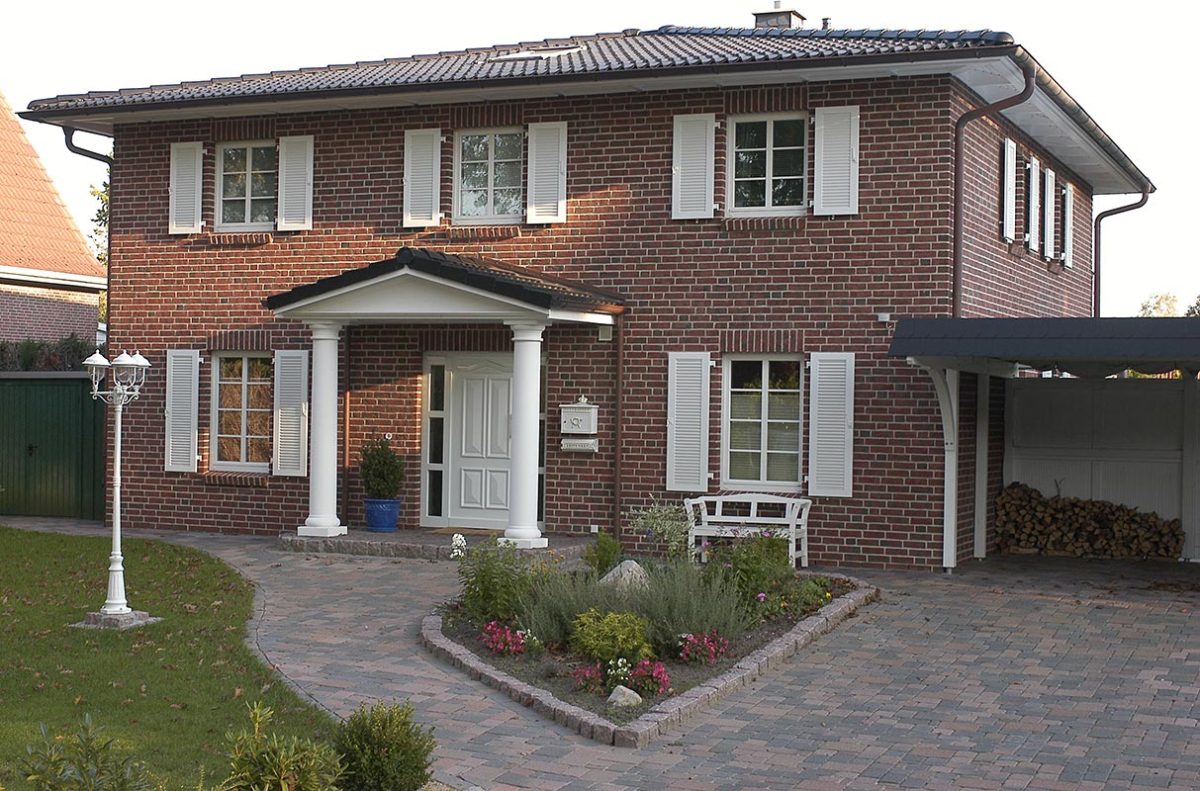
In terms of color and style, your stamped concrete project should be tailored to your tastes. Some colors and patterns work better with specific architectural styles than others. So be sure your choices complement the theme of your home before making a decision.
Choosing the right color for both the short-term and long-term benefits is essential. The following are the most common colors for stamped concrete designs:
- Buff—a hue that is midway between yellow and beige
- Gray—varying in intensity from light to dark
- Camel
- Terra Cotta
- Red
- Wood
- Brown—a color that varies in intensity from light tan to dark chocolate
Classifications of Stamped Concrete Colors
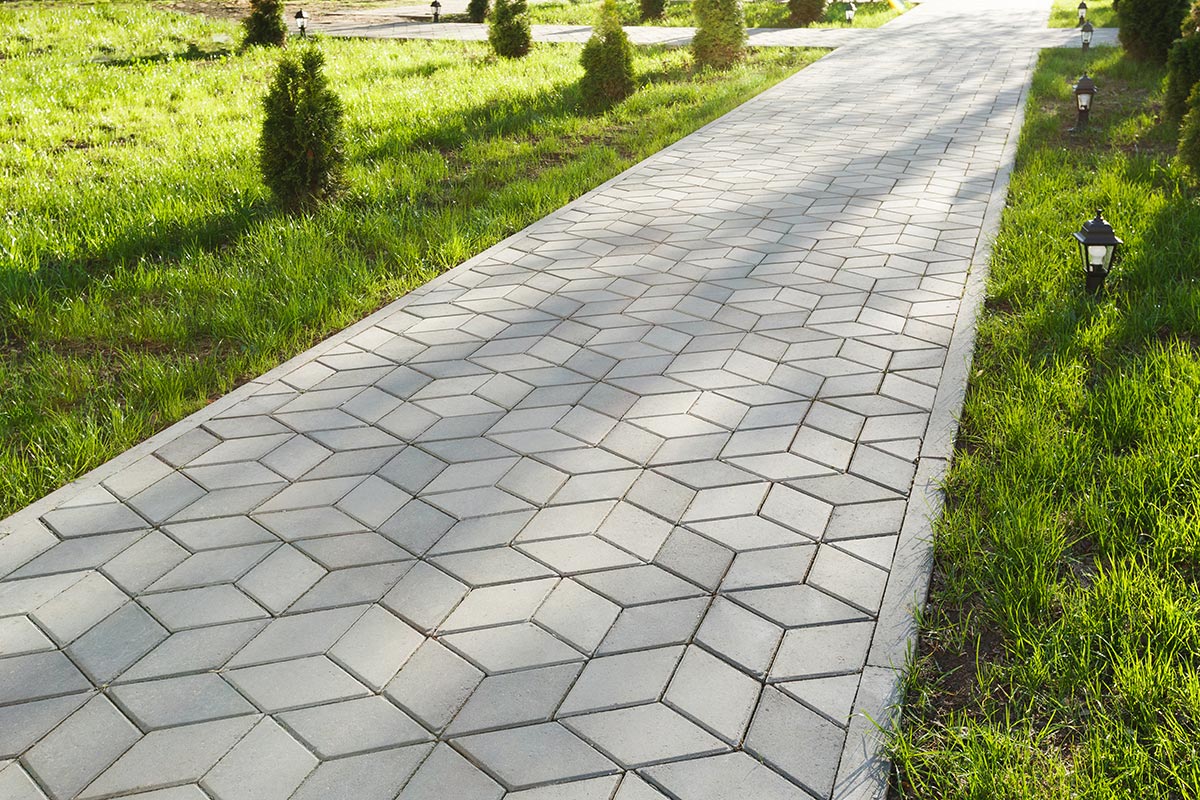
Custom blending is available for different hues, allowing you to get the exact color you want for your project. Most homeowners like a flat color with no depth. You may add depth and tonal variances to concrete by using various techniques to make it look like bricks, wood planks, etc. Here are the different classifications of stamped concrete colors.
1. Intergral Colors
Integral colors are used in conjunction with other colors to generate a permanent color in concrete that does not fade away over time. Integral pigment permeates the concrete and gives the surface a long-lasting color.
The advantage of this is that you will barely notice a difference in color at the bottom of the concrete. When the concrete is mixed, the color is added, and the colored concrete is placed. This is the most common way to color concrete.
2. Shake on Color Hardener
A shake-on color hardener is spread over the freshly built concrete surface during the initial finishing step. Color hardener must be mixed with cement and fine aggregates before applying a dry shake over the surface area. This darkens the color of the concrete and forms a firm, durable layer on the surface.
3. The Releases Color
The release color is the final color applied to the concrete surface. The purpose of the release color is to brighten up the base color, and it also aids in the prevention of stamp mats adhering to the concrete. Choose a darker hue that compliments your base color for a more appealing result.
4. Surface Applied Color
Decorative concrete contractors typically use integrated or dry-shake color with surface-applied coloring medium when stamping concrete designs or patterns. The layering of color in stamped concrete gives it such a realistic-looking appearance, the same as what you'd find in natural stones.
The following are some options:
- tinted liquid release agents,
- tinted solid release agents,
- acid-based chemical stains,
- water-based acrylic stains,
- and concrete dyes.
5. White-On-White
This is mainly used for pool decks and has a distinct aesthetic as well as a cool effect, making it comfortable to walk on even in the sweltering summer sun. White concrete is formed by combining white Portland cement with water and then adding titanium dioxide to make it white.
One of the essential elements to consider when selecting colors for stamped concrete is how well the colors will complement the existing color scheme of your home or structure. The ease of maintenance should also be a concern, especially with light colors. Check out this article on cleaning stains from concrete.
Types of Stamped Concrete Pattern
Stone Designs
These patterns are made to look like authentic stone pavers. This category of concrete pattern includes various textures and patterns, from rustic random stone and flagstone textures to more polished stone ashlar and cobble patterns. Because of their rich, aged surfaces, these stamps are ideal for patios and themed spaces.
Slate Patterns
Slate is one of the earliest paving materials still widely used today. Using slate stamping designs, you may mimic slate pavers' classic, understated look. These textures on walking routes and sidewalks look classic and impressive.
Tile Patterns
Uneven tiles are an eyesore and should be avoided at all costs. Using tile pattern stamps, you may get the consistency and evenness of professionally created stamps without sacrificing elegance. More importantly, unlike off-the-shelf ceramics, stamped-colored concrete can be designed to produce any tile color combination you can think of.
Wood Patterns
Another alternative for internal and exterior flooring is stamped concrete with a wood pattern. It has a grain and pattern similar to wood, but it is more resistant to wear, misuse, and humidity.
Brick Patterns
Brick stamp patterns are available in a range of layouts and come in both new and vintage styles. Herringbone, running bond, basketweave, and fan are just a few of the designs available.
Seamless Textures
You can create indefinite textures that will each be unique if installed correctly, allowing you to achieve a smoother texture without grout lines or hefty joints. Seamless textures are ideal for covering large areas because of their infinite variety. Because they are smoother and easier to walk on than other flooring materials, they are especially well-suited for high-traffic areas.
Natural Stones + Stamped Concrete
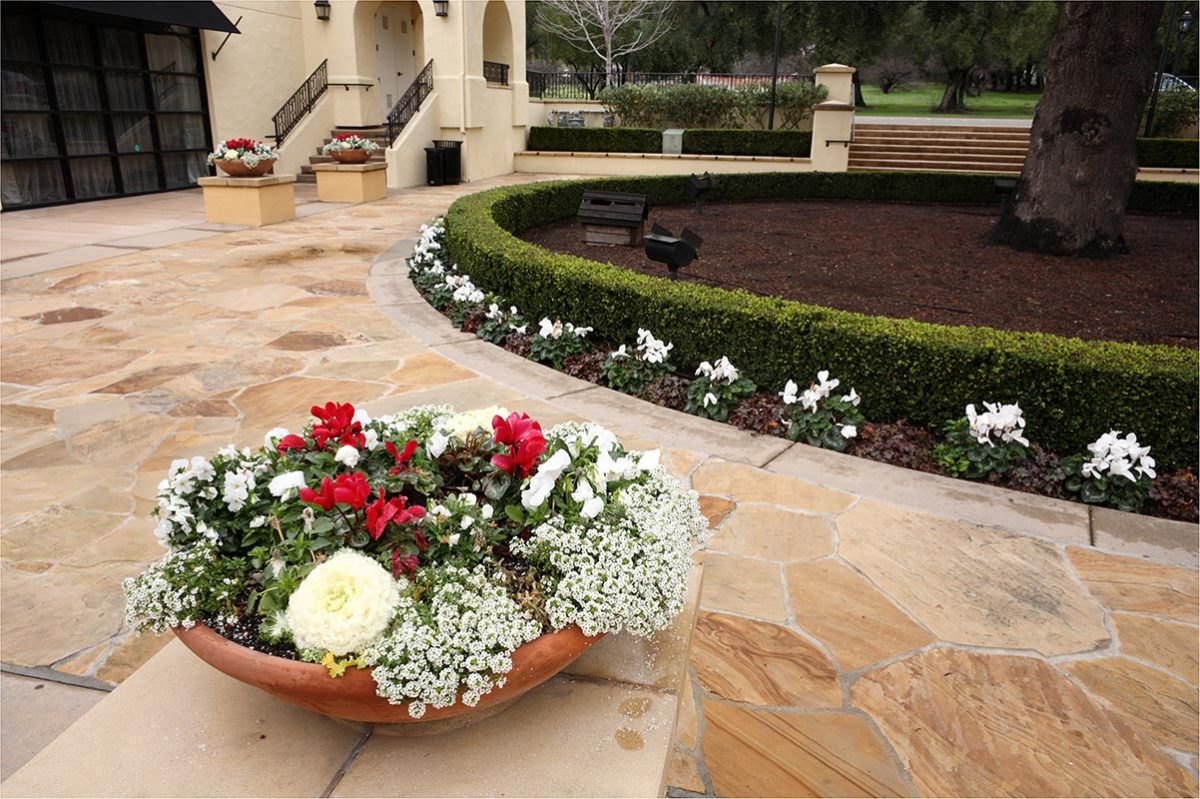
Natural stone is available in a wide range of colors and can be mixed with your stamped concrete. It can be more expensive than other options and takes more effort to install, but it has many benefits worth considering. Natural stone is the perfect choice for stamped concrete, from being environmentally friendly to having a rich look that withstands time.
Adding natural stone is a great way to enhance the look and feel of your stamped concrete. Using natural stone for stamped concrete gives the surface some texture and depth that traditional stones offer. This allows it to be more resistant to general wear and tear, water, sun damage, and many other factors that could affect the surface over time.
In Conclusion
The color of the stamped concrete determines the variety of textured concrete designs. Many natural materials' color palettes and combinations are limited to a few hues and tones. Variations can be challenging to deal with if you're unsure of the color to choose.
Even manufactured materials, such as tile, must adhere to precise color guidelines. But because they are designed and manufactured from production sites, there is little room for customization. On the other hand, stamped concrete is handcrafted, and it is created to precise standards by skilled craftsmen.
Stamped concrete is less expensive than other materials and can be included in the design of your home. Stone, brick, and wood all take a lot of time and work to install, whereas concrete can be poured and stamped quickly.

